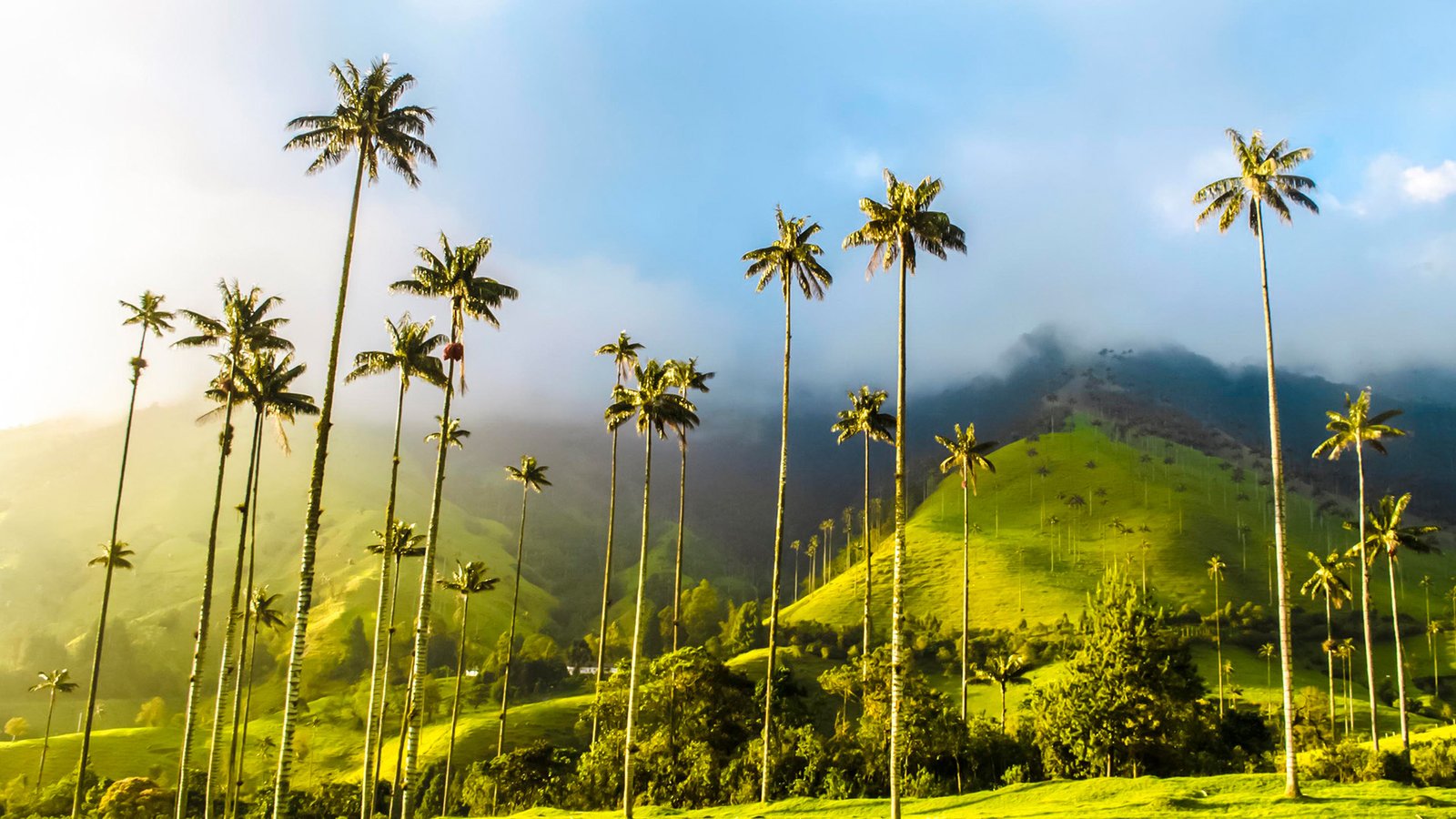
Salento and Valle de Cocora: Stars of Quindío
The colorful atmosphere of Salento and the peaceful greenery and wax palms of the Cocora Valley join forces to bring delighted visitors to this part of Quindío, one of the most alluring natural tourist destinations in Colombia.
By: Vicky Santana Cortés
Photos: Andrés Mayr
After traveling fourteen miles from Armenia, the capital of Colombia’s Quindío department, through greenery scented by sugar and coffee, Salento welcomes us with a row of colorful houses and flowering balconies.
We’re here on Calle Real, in what Colombians refer to as the “father municipality” because it is the oldest in the department, celebrating its 180th anniversary this year. Doors and balconies painted an incredible variety of colors (orange, lime green, yellow, red, Pacific blue) contrast with the white walls, most of which are made of adobe or tapia pisada (layered mud).
Imprinted in Salento’s well-preserved architecture are traces of the colonists who migrated to the coffee-growing region from Antioquia in the mid-19th century. Colorful doors swing open onto a long corridor, the bottom half of which is painted a bright color and lined with wooden railings whose balusters were carved from the wood of the macana palm. Rooms surround the courtyard: the kitchen and bathroom are to one side and in the back, a patio with a vegetable garden and fruit trees.

Panoramic View
The Alto de la Cruz viewpoint, atop 250 stairs, offers a panoramic view of the town, rightly considered one of the most beautiful in Colombia. Those who make the climb can see the straight line of Calle Real, the Our Lady of Carmen Church, the town’s colorful houses and, on a clear day, the Valle de Cocora and surrounding forests in the distance.
The cafes, restaurants, inns, and hostels along Calle Real are interspersed with one- and two-story houses. Handcrafts, especially silver and costume jewelry, are an important part of Salento’s cultural landscape.
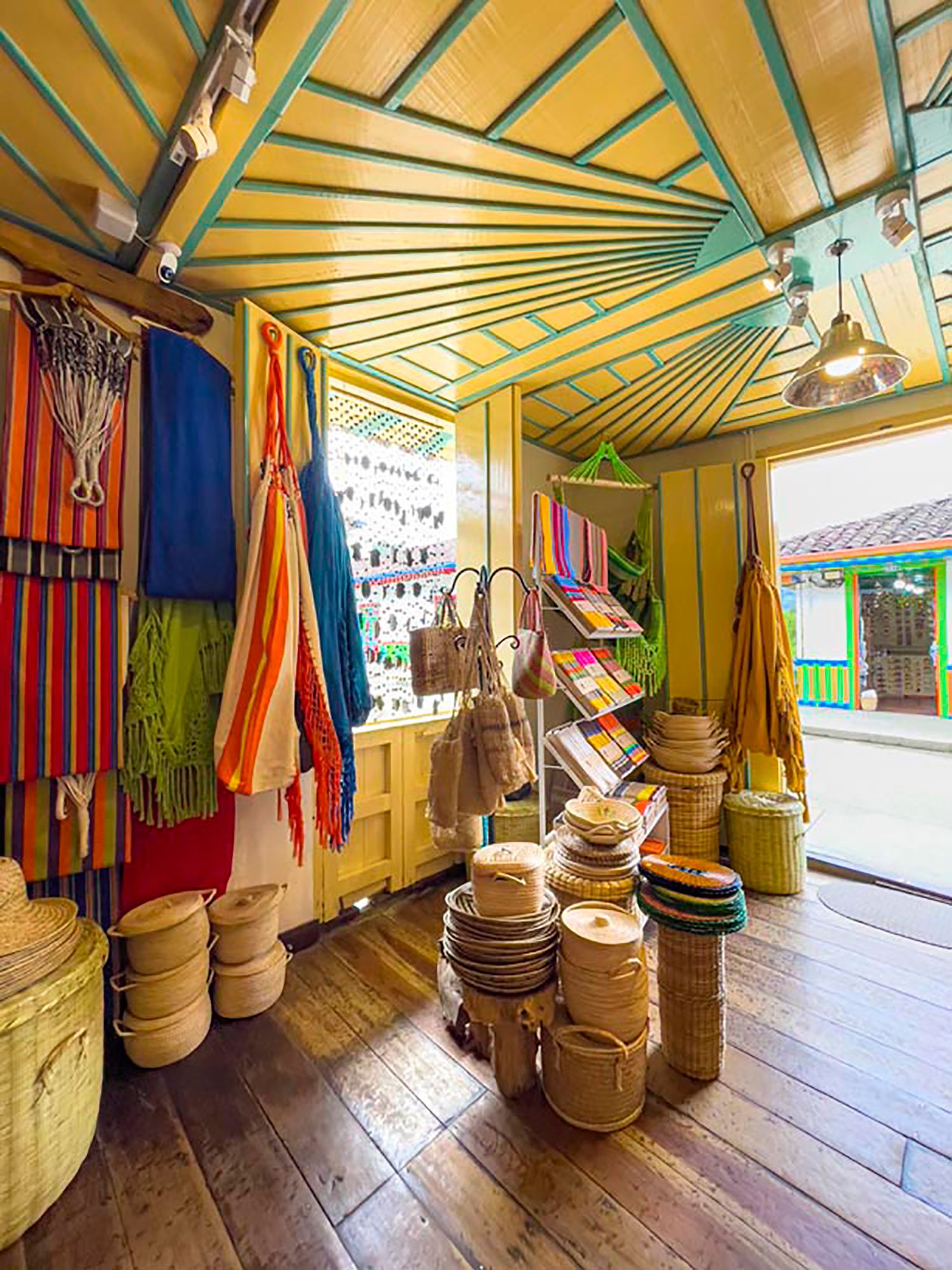
Travelling by Jeep
You’ll notice the old Willys jeeps in the main square, many of which date back to the 60s and 70s. These vehicles have played an essential role in coffee culture since they arrived in Colombia after World War II, all but replacing the work that had previously been performed by mules. The famous term “yipao” (jeepful) defines the size of a load of bananas, corn, or anything else the Willys can carry. Today drivers alternate between offering their services to tourists and transporting cargo like merchandise and personal belongings.
The Cocora Valley: Changing Landscapes
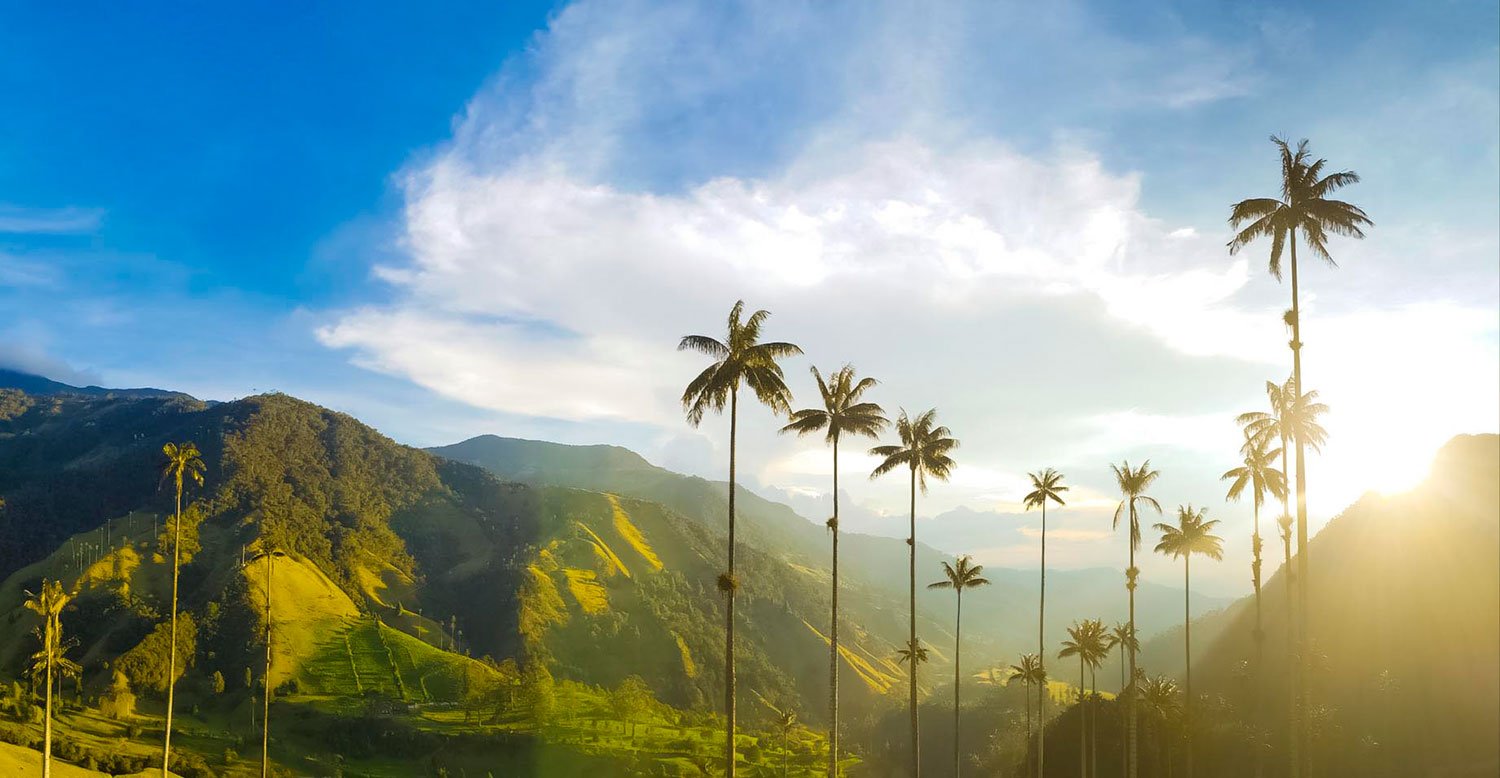
Just seven miles from Salento the 2,400-acre Valle de Cocora Natural Reserve is the natural habitat of the Quindío wax palm, Colombia’s national tree; the reserve serves as home to 85% of the wax palms in Colombia.
The deep blue sky over the undulating green hills briefly creates a backdrop for the slender palms. Ten minutes later, the mist rolls down the mountains and covers the treetops, leaving only a glimpse of the rings that testify to the trees’ longevity. It is the Andean cloud forest ecosystem takes on an almost theatrical dimension as the silhouettes of the palm trees are highlighted on the hills.
Inside the reserve, visitors can choose from a selection of walks ranging from two to nine miles long; guided tours on horseback are also available. The tours take visitors across seven hanging bridges for a closer look at the source of the Quindío River, which is the department’s main water resource. Its source lies near the Estrella de Agua Biological Station at the entrance to the Nevados National Park, another adventure tourism attraction in the area.
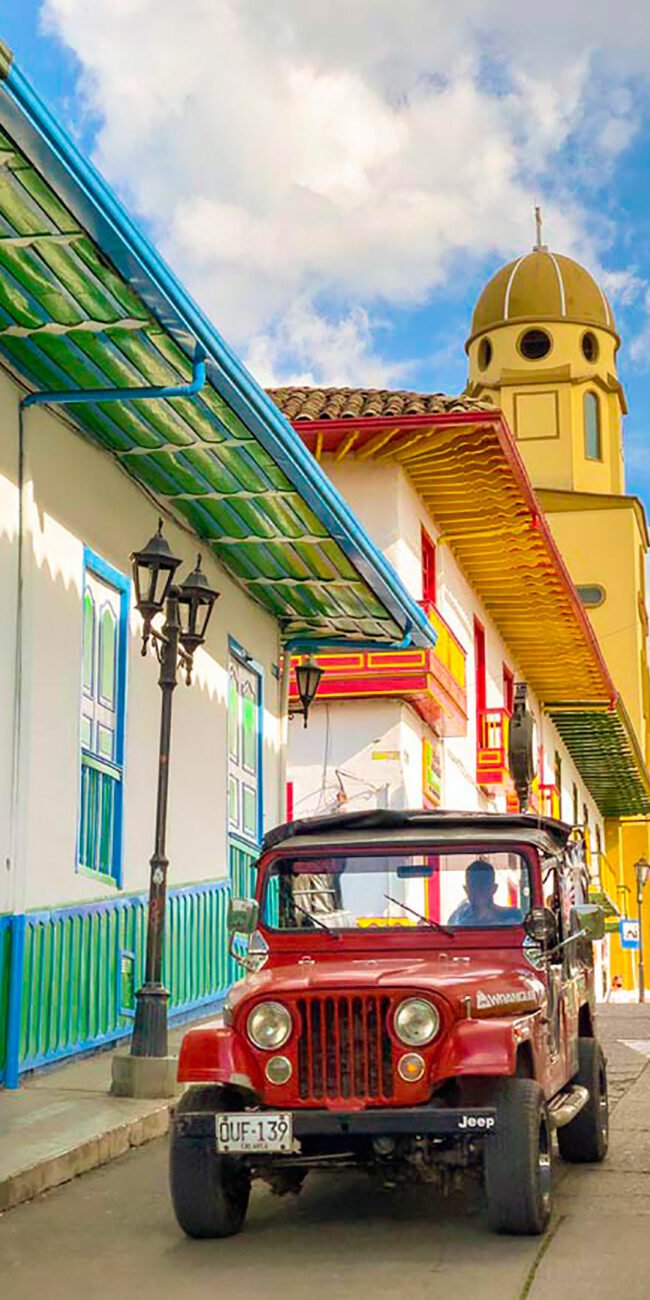
How to get there
From North, Central, and South America and the Caribbean, Copa Airlines flies to Armenia, capital of the Quindío department, from its Hub of the Americas in Panama City.
Fourteen miles of well-paved road take you from Armenia to Salento. Tourists can travel by jeep from Salento’s main square to the Cocora Valley.
What to eat
Don’t hesitate to order the rainbow trout at any restaurant.
Bosques de Cocora. www.valledelcocora.com.co
Sueño de fresas, de Olier Chocolatl (Salento).
Donde Juan B. In the heart of the Cocora Valley.
Where to stay
Finca Hotel El Ocaso, located just 2.4 miles from Salento, is a traditional coffee farm with more than a hundred years of history. Its coffee tour is very popular with travelers interested in learningabout coffee culture.
https://www.fincaelocasosalento.com
The El Mirador del Cocora hotel, offers spectacular views from its privileged location.
The Hostal Ciudad de Segorbe, is over a hundred years old.
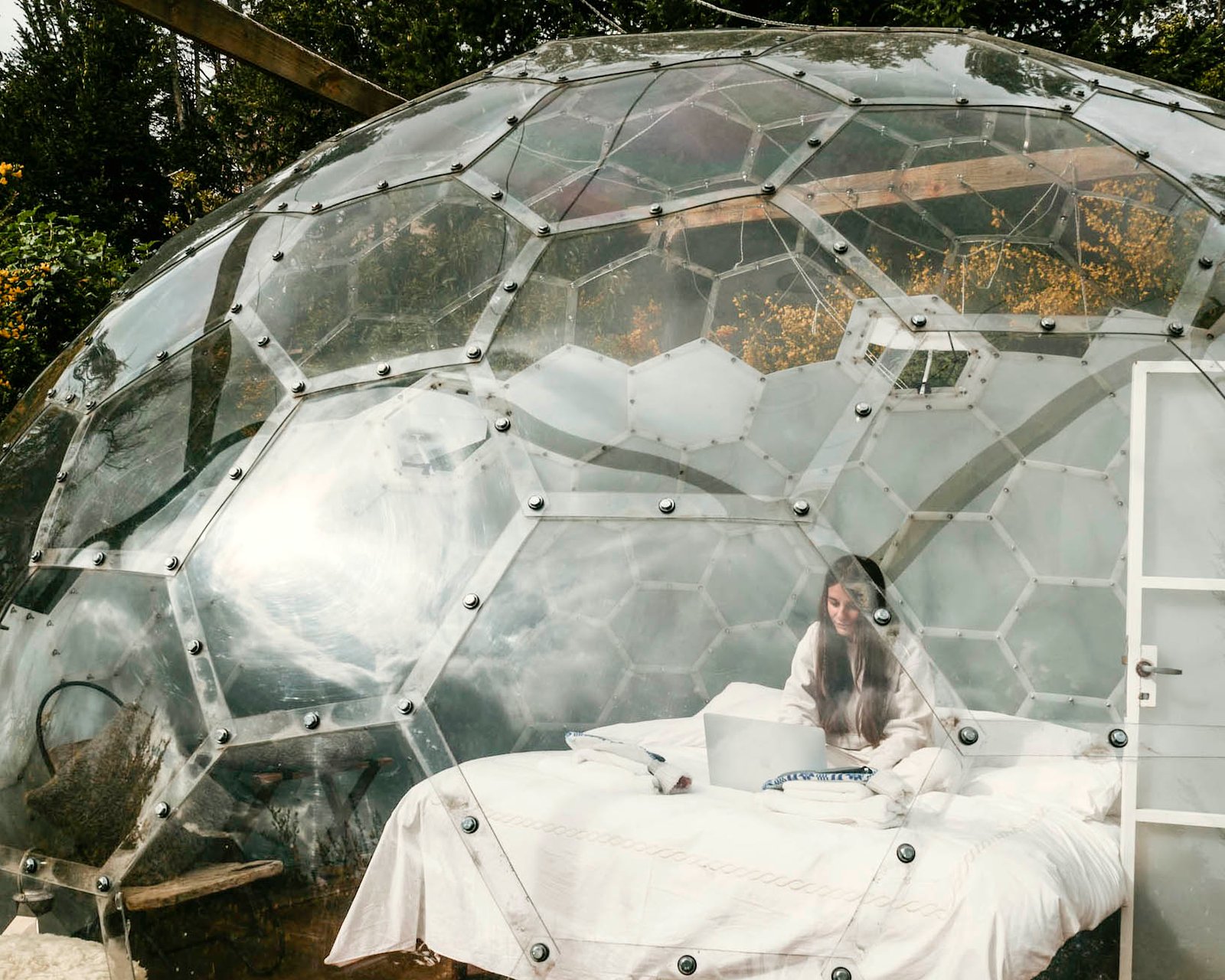
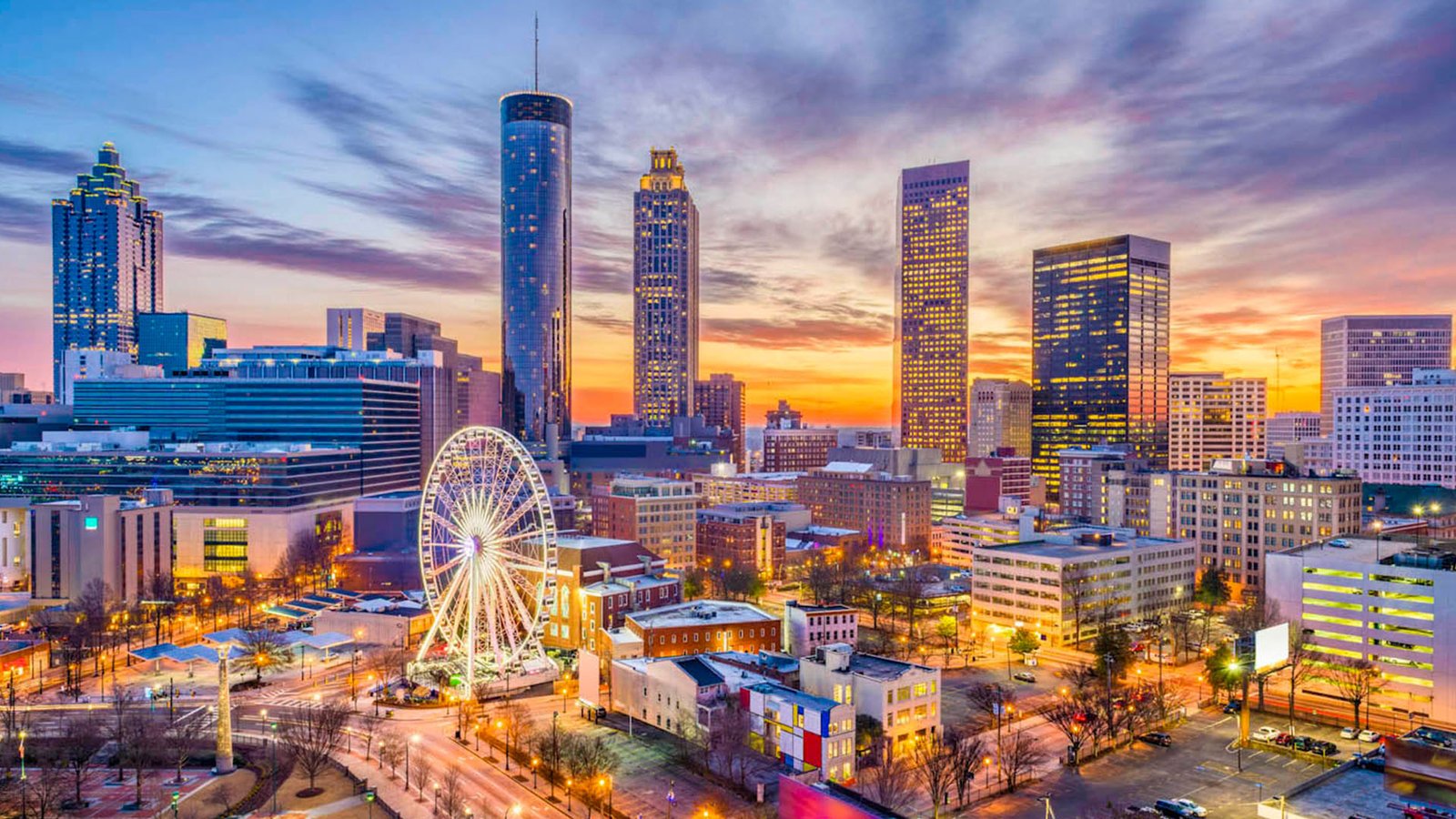
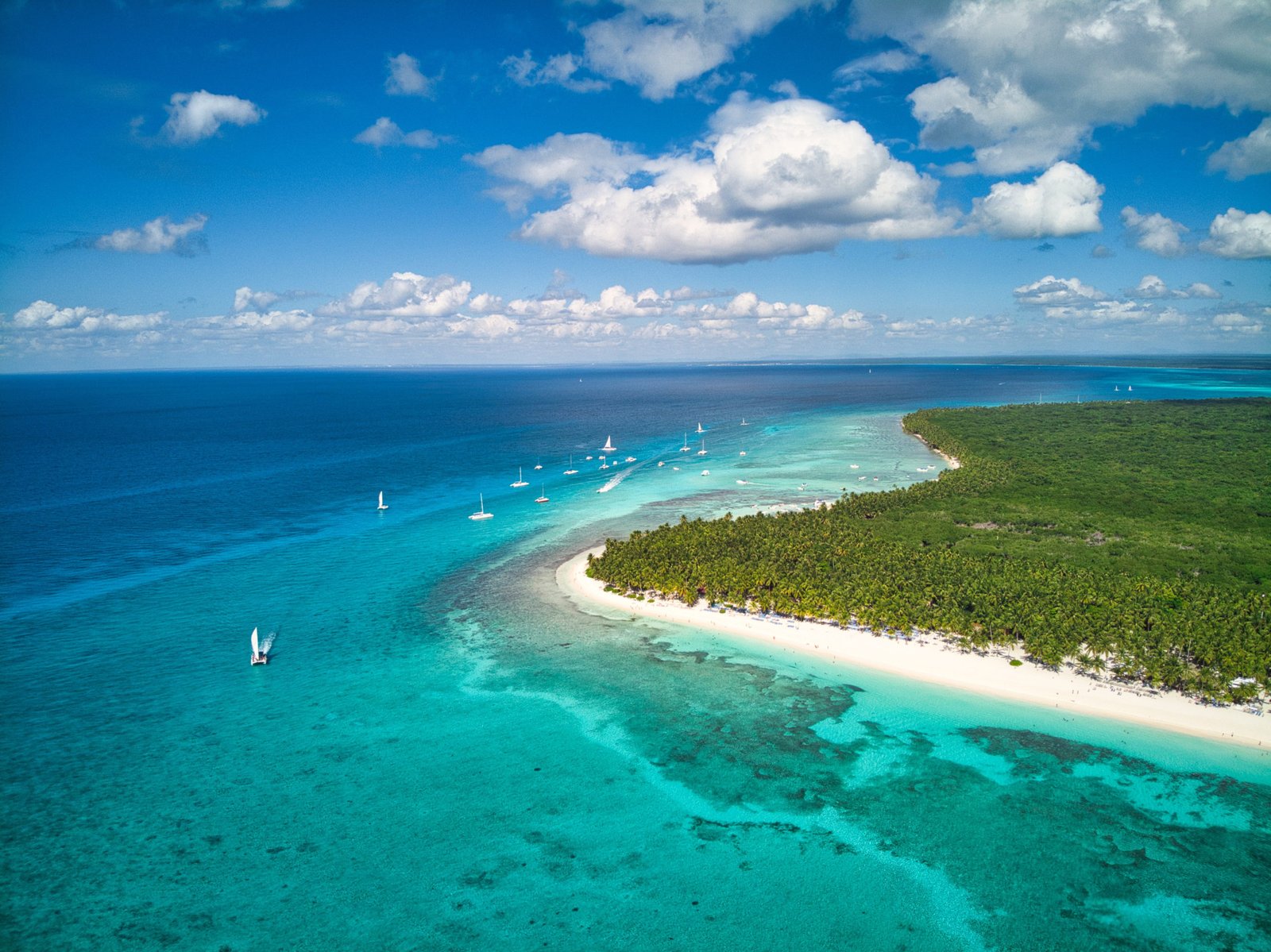

Leave a Reply